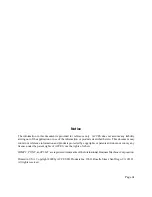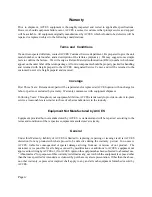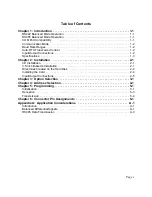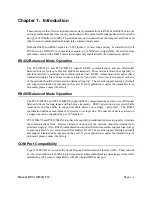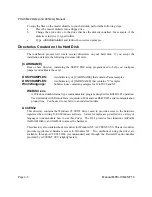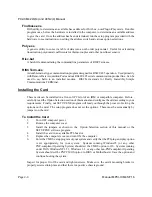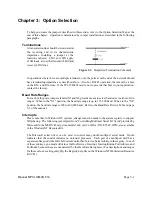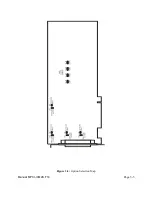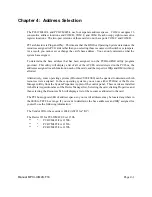
Page 1-1
Manual MPCI-ICM4S.F1b
Chapter 1: Introduction
These cards provide effective asynchronous serial communications in RS422 and RS485 networks
on long communications lines in noisy environments. The cards feature independent serial ports and
use type 16550 buffered UARTs. The data lines are opto-isolated from the computer and from each
other to assure communication through large common mode noise.
Both the RS422 and RS485 cards are 12.283 inches (312 mm) long and may be installed in 5-volt
PCI-bus slots of IBM PC or compatible computers. For Windows compatibility, the cards feature
automatic control in the RS485 mode to transparently enable/disable the transmission drivers.
RS422 Balanced Mode Operation
The PCI-ICM422/2 and PCI-ICM422/4 support RS422 communications and use differential
balanced drivers for long cables and high noise immunity. These cards also have the capability to
add load resistors to terminate the communications lines. RS422 communications requires that a
transmitter supply a bias voltage to ensure a known "zero" state. Also, receiver inputs at each end
of the network should be terminated to eliminate "ringing". These cards support biasing by default
and support termination by jumpers on the card. If your application requires the transmitter to be
un-biased, please contact the factory.
RS485 Balanced Mode Operation
The PCI-ICM485/2 and PCI-ICM485/4 support RS485 communications and also use differential
balanced drivers for long range and high noise immunity. RS485 operation involves switchable
transceivers and the ability to support multiple devices on a single "party line". The RS485
specification defines a maximum of 32 devices on a single line. The number of devices served on
a single line can be expanded by use of "repeaters".
PCI-ICM485/2 and PCI-ICM485/4 also have the capability to add load resistors to properly terminate
the communications lines. Receiver inputs at each end of the network should be terminated to
eliminate 'ringing". Also, RS485 communications requires that one transmitter supply a bias voltage
to ensure a known "zero" state when all transmitters are off. These cards support biasing by default
and support termination by jumpers on the card. If your application requires the transmitter to be
un-biased, please contact the factory.
COM Port Compatibility
Type 16550 UARTs are used as the Asynchronous Communication Element (ACE). These include
a 16-byte transmit/receive buffer to protect against lost data in multitasking operating systems, while
maintaining 100 percent compatibility with the original IBM serial port.
Summary of Contents for PCI-ICM422/2
Page 2: ......
Page 16: ...PCI ICM422 2 4 and 485 2 4 Manual Page 2 6 Manual MPCI ICM4S F1b...
Page 19: ...Page 3 3 Manual MPCI ICM4S F1b Figure 3 2 Option Selection Map...
Page 20: ...PCI ICM422 2 4 and 485 2 4 Manual Page 3 4 Manual MPCI ICM4S F1b...
Page 22: ...PCI ICM422 2 4 and 485 2 4 Manual Page 4 2 Manual MPCI ICM4S F1b...
Page 28: ...PCI ICM422 2 4 and 485 2 4 Manual Page 6 2 Manual MPCI ICM4S F1b...
Page 32: ...PCI ICM422 2 4 and 485 2 4 Manual Page A 4 Manual MPCI ICM4S F1b...



